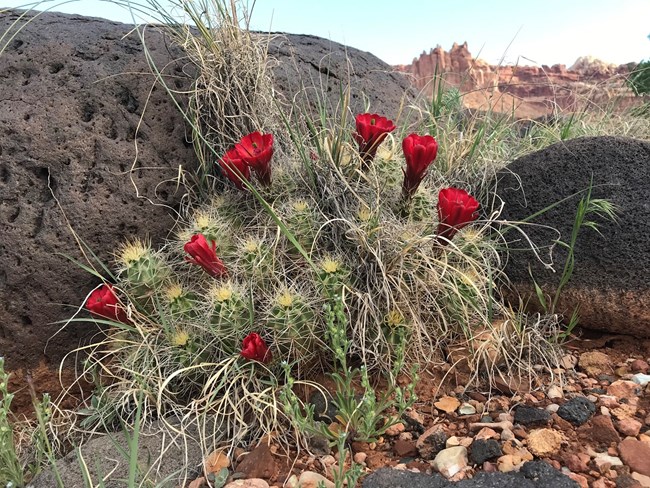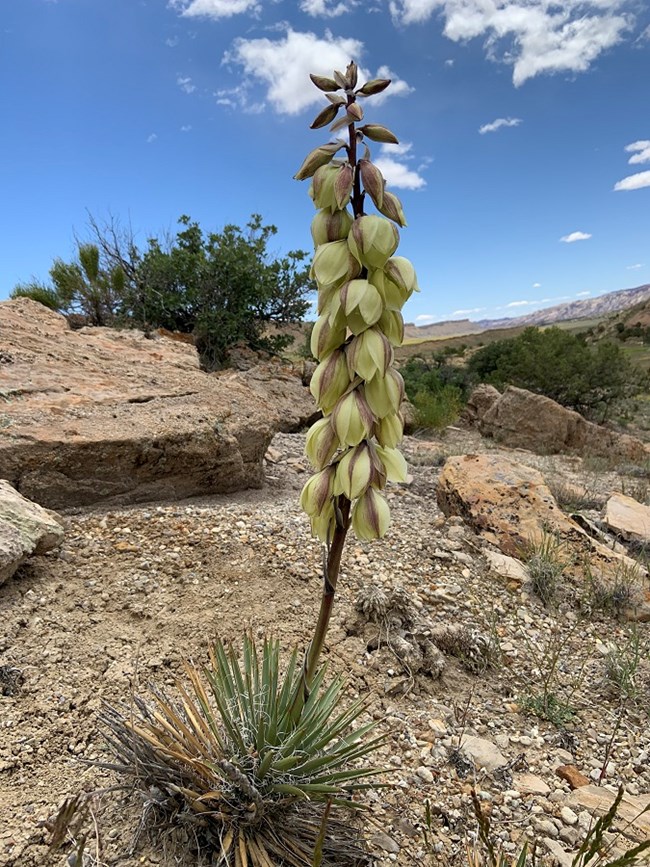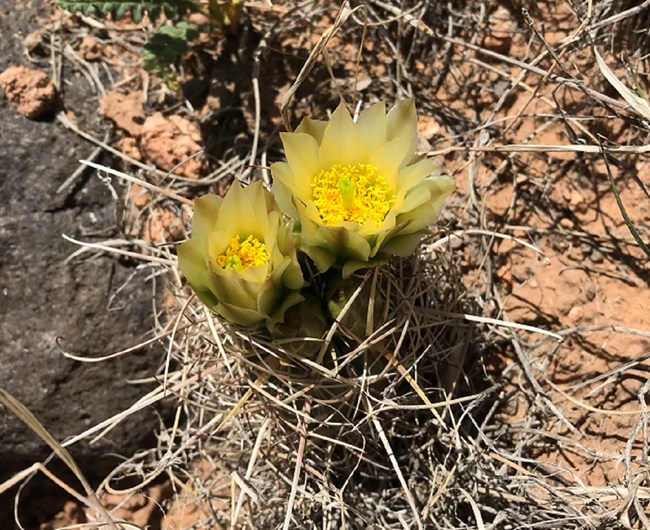|
All park resources, including cactus and other succulents, are protected. It is illegal to pick flowers and seeds, or remove plants from the park. 
NPS/ Shauna Cotrell Claret CupScientific Name: Echinocereus triglochidiatus 
NPS / Shauna Cotrell Harriman's YuccaScientific Name: Yucca harrimaniae Plains Prickly PearScientific Name: Opuntia polyacantha 
NPS / Shauna Cotrell 
NPS/ Shauna Cotrell Small-Flower Fishhook CactusScientific Name: Sclerocactus whipplei Description: This barrel-shaped cactus was named for the 0.5–3 in (1.3–7.6 cm) long spines that are hooked at the tip like a fishhook. The flowers are up to 2 in (5 cm) wide and are pink, white, or yellow. |
Last updated: February 14, 2021
